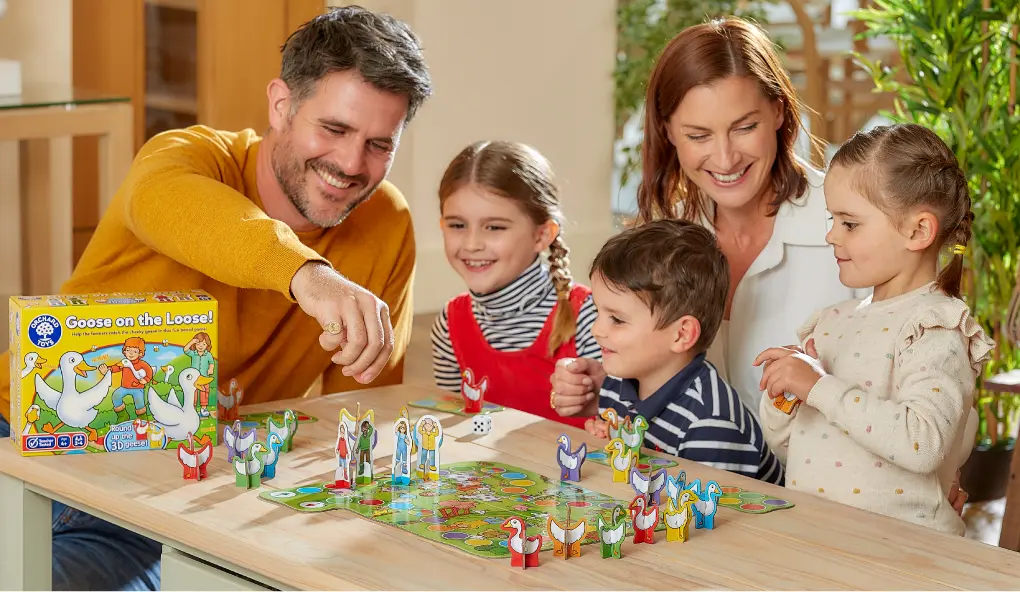Managing Anger Issues in Children: Top Strategies
To manage anger issues in children, start by identifying triggers with parental involvement and therapy support. Teach emotional regulation through breathing exercises and recognizing emotions. Encourage positive coping methods like mindfulness and expressing feelings constructively. Establish clear boundaries aligned with family values and maintain consistency. Practice relaxation techniques such as deep breathing and visualization for calmness. If anger problems persist, seek help from a behavioral therapist who can guide the child in managing emotions effectively. These strategies combined can provide a holistic approach to supporting your child’s emotional well-being.
Key Takeaways
- Identify triggers through parental involvement and therapist support.
- Teach emotional regulation with breathing exercises and trigger recognition.
- Encourage positive coping mechanisms like mindfulness and art therapy.
- Set clear boundaries consistently with age-appropriate consequences.
- Practice relaxation techniques such as deep breathing and visualization.
Identifying Triggers

Identifying triggers is vital in helping children manage their anger effectively. Parental involvement plays a critical role in recognizing these triggers. By observing your child’s behavior patterns closely, you can start to pinpoint specific situations or events that lead to outbursts.
Having open communication with your child about their feelings and experiences can also aid in identifying triggers. Therapist support can further enhance this process by providing professional guidance and strategies tailored to your child’s needs.
Understanding what sets off your child’s anger allows you to proactively address these triggers. It enables you to teach your child coping mechanisms and develop emotional regulation skills. By working together with your child and any involved therapists, you can create a supportive environment that fosters growth and progress in managing anger.
Teaching Emotional Regulation

When it comes to helping children manage their anger, teaching emotional regulation is key.
Try incorporating simple breathing exercises to promote calmness, help them identify triggers and the emotions they’re feeling, and teach positive coping mechanisms for when things get tough.
Breathing Exercises for Calmness
To help your child learn to regulate their emotions and find calmness during moments of anger, incorporating simple breathing exercises into their daily routine can be highly effective. Mindfulness practices and relaxation techniques are valuable tools for teaching emotional regulation.
One effective breathing exercise is belly breathing. Encourage your child to place their hand on their stomach and take slow, deep breaths, feeling their stomach rise and fall with each inhalation and exhalation. This technique can help them feel more centered and in control when faced with anger or frustration.
Another beneficial exercise is square breathing. Guide your child to inhale for a count of four, hold their breath for four, exhale for four, and then pause for another count of four before repeating the cycle. This rhythmic breathing pattern promotes relaxation and can be a powerful way to calm down during heated moments.
Identifying Triggers and Emotions
Start by paying attention to signals or situations that often lead to outbursts or heightened emotions in your child, as this awareness is key to teaching emotional regulation. Recognizing signs that your child is becoming upset or frustrated can help you intervene before their emotions escalate. These signs could include physical cues like clenched fists, changes in breathing, or a flushed face.
Additionally, pay attention to triggers such as changes, loud noises, or specific tasks that consistently lead to emotional outbursts. Understanding emotions is important in helping your child manage their anger. Encourage them to label their feelings, whether it’s frustration, sadness, or disappointment. By identifying and verbalizing their emotions, children can begin to regulate them more effectively.
Teach them that all emotions are valid and provide a safe space for them to express how they feel without judgment.
Teaching Positive Coping
Pay attention to teaching your child positive coping strategies as a pivotal component of helping them learn emotional regulation. Parental involvement plays a significant role in guiding children towards effective coping mechanisms.
Encouraging mindfulness practices can assist children in understanding and managing their emotions better. By being present in the moment, your child can learn to recognize triggers and respond to them in a more controlled manner.
Family therapy can also be beneficial in teaching positive coping strategies. It provides a safe space for both you and your child to explore emotions and learn how to regulate them together.
Stress management techniques, such as deep breathing exercises or progressive muscle relaxation, can be valuable tools that your child can use when feeling overwhelmed or upset.
Encouraging Positive Coping Mechanisms

Help your child develop healthy ways to manage their anger by actively promoting positive coping mechanisms.
Encouraging mindfulness practices and engaging in art therapy can provide valuable tools for your child to process and express their emotions in a constructive manner. Mindfulness practices, such as deep breathing exercises or guided meditation, can help your child become more aware of their feelings and learn to respond to them calmly.
Art therapy offers a creative outlet for your child to explore their emotions through various art forms, fostering self-expression and emotional regulation.
Additionally, incorporating physical activity into your child’s routine can be a great way to release pent-up energy and reduce feelings of anger. Encouraging them to participate in sports or go for a walk can help them channel their emotions in a positive direction.
Furthermore, providing social support by nurturing healthy relationships with family and friends can offer your child a strong foundation of emotional support and understanding.
Setting Clear Boundaries
Encourage your child to understand and respect boundaries by clearly defining expectations and limits for behavior. Parental guidance plays an essential role in setting clear boundaries. It’s vital to establish rules that are age-appropriate and align with your family values.
Consistency is key when enforcing these boundaries. By implementing discipline techniques consistently, your child will learn the importance of adhering to set limits.
When your child oversteps a boundary, it’s important to follow through with consistent consequences. This helps your child understand the direct correlation between their actions and the outcomes.
Behavior management is an ongoing process that requires patience and persistence. By setting clear boundaries and consistently enforcing them, you provide a structured environment for your child to thrive in.
Practicing Relaxation Techniques

When helping children manage their anger, it’s important to introduce relaxation techniques to calm their emotions.
Deep breathing exercises, visualization techniques, and progressive muscle relaxation are effective methods to teach kids how to soothe themselves when feeling upset.
These techniques can empower children to take control of their emotions and respond more calmly in challenging situations.
Deep Breathing Exercises
Practice deep breathing exercises as a simple yet effective way to help children manage their anger and promote relaxation. Deep breathing is a core component of relaxation techniques and calmness strategies that can aid in reducing stress levels.
By incorporating mindful meditation into daily routines, children can learn to center themselves and find inner peace when faced with challenging emotions. Encourage your child to take slow, deep breaths in through the nose, hold for a few seconds, and then exhale slowly through the mouth. This practice helps regulate emotions by activating the body’s relaxation response, leading to decreased feelings of anger and frustration.
Teaching deep breathing exercises at a young age equips children with a valuable tool for managing their emotions in a healthy way. When your child feels overwhelmed or upset, prompt them to engage in deep breathing to restore a sense of calmness and control.
Visualization Techniques
To effectively incorporate visualization techniques for relaxation, guide your child in imagining peaceful scenes or scenarios that promote a sense of calmness and tranquility. Creative visualization, also known as guided imagery, can be a powerful tool in helping children manage their anger issues. Encourage your child to close their eyes and picture a place where they feel safe and happy, such as a sunny beach or a peaceful forest. Prompt them to focus on the details of this imagined place – the colors, sounds, and smells.
By engaging in this visualization exercise, your child can learn to shift their focus from anger towards a more serene state of mind. It’s essential to practice creative visualization regularly with your child to strengthen their ability to use this technique when they feel angry or upset. By incorporating guided imagery into their daily routine, your child can develop a valuable skill for managing their emotions and finding inner peace.
Progressive Muscle Relaxation
Engage your child in the practice of progressive muscle relaxation to help them unwind and alleviate tension in their body. This mindfulness practice involves tensing and then slowly releasing each muscle group, teaching your child to distinguish between tension and relaxation. By focusing on their body, children can learn to recognize signs of stress and actively manage their emotions. Progressive muscle relaxation is a powerful stress management tool that can be used anywhere, making it a practical technique for children to employ when feeling overwhelmed or angry.
During a session, guide your child to start with their toes, working their way up through the legs, abdomen, arms, and finishing with the face. Encourage them to breathe deeply and stay present in the moment, letting go of any negative thoughts or worries.
Seeking Professional Help
Seeking professional help is crucial if your child’s anger issues persist despite your efforts. Behavioral therapy can be highly effective in helping children learn coping mechanisms and develop healthier ways to express their emotions. A trained therapist can work with your child to identify triggers and teach them how to manage their anger in a constructive manner.
In some cases, medication management may also be recommended by a mental health professional to help regulate your child’s emotions. Consulting with a qualified healthcare provider to explore this option further and understand the potential benefits and risks associated with medication is important.
Frequently Asked Questions
How Can I Help My Child Apologize After an Anger Outburst?
After your child’s anger outburst, help them understand the impact by teaching empathy. Role-play scenarios where they apologize, showing them the importance of taking responsibility for their actions. Encourage them to express remorse and learn from mistakes.
Is It Normal for Kids to Have Anger Issues?
Yes, it’s normal for kids to have anger issues. Teaching coping mechanisms and seeking therapy can help. Parenting support and communication strategies are key. Remember, addressing these issues early can lead to positive outcomes.
Should I Punish My Child for Expressing Anger?
When your child expresses anger, remember, punishment may not be the best approach. Instead, focus on positive reinforcement for good behavior and open communication to help them express their emotions in a healthy way.
Can Anger Issues in Children Be Hereditary?
Yes, anger issues in children can be hereditary due to genetic factors. However, parenting styles play a significant role in managing and mitigating these tendencies. Understanding this interplay can help you support your child effectively.
Are There Any Apps or Games That Can Help With Anger Management?
Sure, you can find apps and games that offer mindfulness activities and relaxation techniques to help manage anger. These resources can be beneficial in teaching children effective ways to cope with strong emotions.
Conclusion
Remember, managing anger issues in children takes time and patience. By identifying triggers, teaching emotional regulation, encouraging positive coping mechanisms, setting clear boundaries, practicing relaxation techniques, and seeking professional help when needed, you can help your child navigate their emotions in a healthy way.
Stay consistent, show compassion, and always communicate openly with your child to support them on their journey towards better emotional management. You aren’t alone in this journey.

Chad Adan Kace, a young dad from Vermont, shares his parenting journey with a touch of humor and lots of love. Father to a lively baby, he explores the joys and challenges of fatherhood through his stories.







